To say that we were pleasantly surprised by Sibiu, Romania would be an understatement. In our three days visiting, whenever we went around a corner, we kept commenting about how cute the town was and how few other tourists we saw. Sibiu is a tourist destination, so maybe it was a combination of rain and our being there on Monday and Tuesday, when at least some sights are closed.

Choosing to Visit Sibiu, Romania
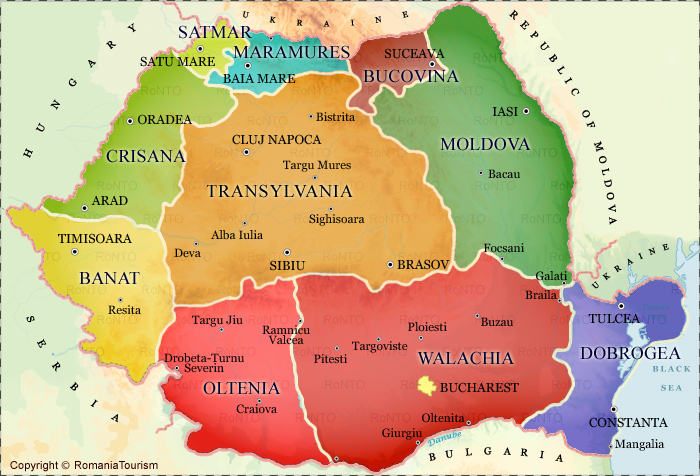
When we decided to visit Romania, we knew that we wanted to spend most of our time in Transylvania. We also knew that since we were coming from Zagreb, Croatia, we would need to pass through Bucharest. It was July and Bucharest has a reputation for summer heat (and it didn’t disappoint), so we limited ourselves to a few days in Romania’s capital city.

A Brief Stopover in Bucharest

We spent an evening wandering around Bucharest’s Old Town, an eclectic mix of architecture. From cobblestone pedestrian walkways lined with cafés, tons of bars, and restaurants to elaborate buildings from the 1800’s during the time of the monarchy, to ugly Communist block towers. Also, shiny new large reflective windowed buildings to old stone and brick crumbling abandoned structures. And not too far away, the looming, humongous Palace of the Parliament built by Communist leader Nicolae Ceausescu as part of his massive urban development plan. Today, many people refer to this building as the People’s House, and we’ve been told that locals either love or hate it. You can tour the now mostly empty palace which houses Parliament and the National Museum of Contemporary Art.
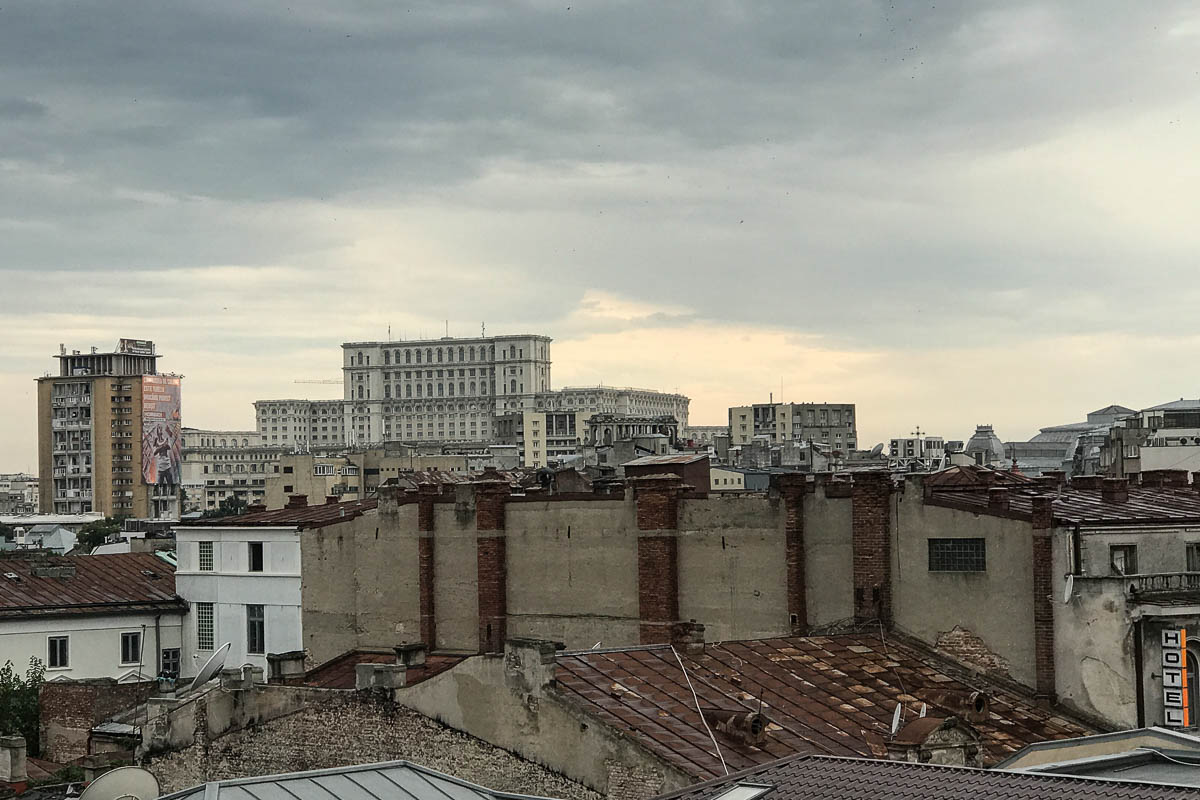
The Village Museum
The next day, we spent a lovely afternoon with our new Romanian friend, Frensis. We were introduced to her remotely by Joel, a friend of Ann’s from high school. Despite the drizzle and continued threat of rain, we chose to forego the People’s House and visit the Village Museum

instead. We got to see (before getting rained out) some of the over 300 traditional houses spread throughout large and beautifully green Herăstrău Park. Most of the houses are original construction from the different regions of Romania. These houses were moved from their original locations and reconstructed.

During the afternoon, Frensis gave us the lowdown on much about Romanian history, its people and government, the city of Bucharest itself, other regions of the country, culture, tradition, and more. We feel we learned so much in a short space of time from our new friend. Armed with our new knowledge, we were ready to head out to the mountains of Transylvania.
Onward to Sibiu
After watching Rick Steves’ TV show on Romania, we knew that we wanted to visit Sibiu. Sibiu is in the southern part of Transylvania in the center of Romania. We decided to visit Sibiu first because it was the farthest from Bucharest of our planned destinations. Allowing us to work our way back, meaning that we could go directly from our last destination to the airport without having to overnight in Bucharest again.
Getting to Sibiu, Romania
The train took six hours from Bucharest to Sibiu, and that was the express. Yes, trains can be quite slow in Romania. On the plus side, they are also quite inexpensive. We spent $40 for two tickets in second class. Be sure to purchase a ticket a day ahead because all the seats in our car were full. As a side note, our train left Bucharest at 2 pm and was continuing all the way to Vienna.
Note: There is a small airport in Sibiu, with service limited to a few locations, none of which lined up with our plans, so we needed to arrive and depart through Bucharest.
Sibiu Orientation
Sibiu is one of the most well preserved historical cities in Transylvania. Like most European towns, it has a historical core surrounded by a newer town. Most destinations of interest to tourists are located within the historical core, divided into two sections, the upper town and the lower town. During most of the Middle Ages, Hungary controlled Transylvania. To build up the population because of threats from the Ottoman Empire, the Hungarians invited Saxons from Northern Germany to settle Transylvania. The upper town was populated by Hungarians and Saxons. Since ethnic Romanians were not allowed to live there, they settled in the lower town. The lower town is sometimes referred to as the merchant town, alluding to the fact that it was the working class who lived in the lower town.
Attractions in Sibiu, Romania
Sibiu Upper Town
Piața Mare (Big Square) has been the center of the city for hundreds of years. The Council Tower, Turnul Sfatului, dominates the square. Climbing the tower provides views of the city, changing exhibitions, and a look at the inner workings of the tower clock. We didn’t climb the tower, in part because it was raining most of the time we were in Sibiu.

An interesting array of old buildings (many former homes of key figures), most with “eyes” in their rooves for ventilation, surround the square. Some of the other buildings on Piața Mare include the baroque Catholic church, the Brukenthal Palace (turned art museum), and the newer Town Hall, with the Tourist Information office and a temporary art exhibition in the lobby.
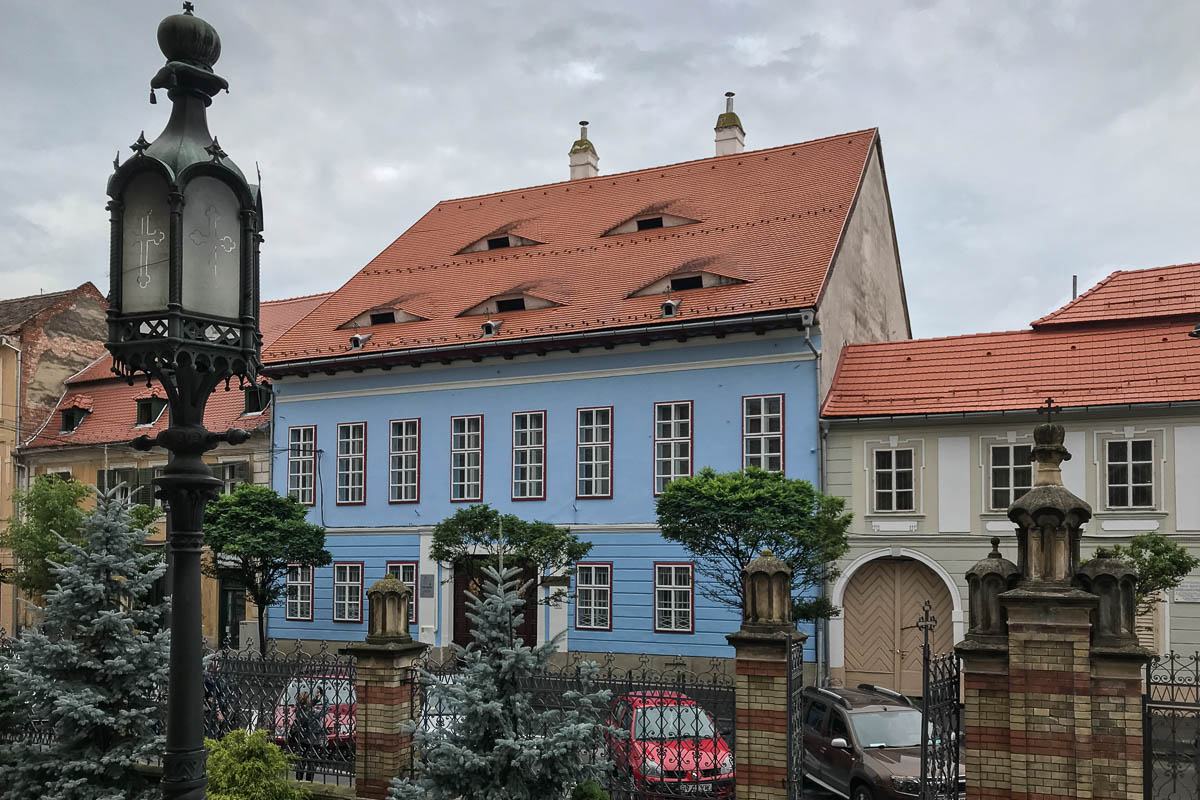
Nearby is the impressively large Sibiu Lutheran Cathedral of Saint Mary, built in the 14th century on the site of another 12th century church. Due to major renovation, we were only able to see a very small part of the inside. We opted not to climb the bell tower for the view, once again due to the rainy weather.

A few blocks away, we walked by the newer (early 20th century) Byzantine style Holy Trinity Cathedral, the seat of the Romanian Orthodox Archbishop of Sibiu and Metropolitan of Transylvania. In case you didn’t know (we didn’t), the Metropolitan refers to the archbishop of a region of province.


Strada Nicolae Bălcescu – Pedestrian Street
Just off Piața Mare is Strada Nicolae Bălcescu, Sibiu’s pedestrian street, a bit less than a half mile long. Shops (including our local grocery store), restaurants, Renaissance-style buildings, and numerous gelato stands line the street. The number of pedestrians on this street greatly increased when the rain stopped. Strada Nicolae Bălcescu ends at Unirii Square, with some more modern buildings, a greenspace roundabout, and two parks.

Sibiu’s Old City Wall and Towers
During Medieval times, the numerous towers along the walls served not only for fortification, but each tower housed a different guild. Some of the best preserved include the Harquebusiers Tower, Turnul Archebuzierilor; the Potters Tower, Turnul Olarilor; and the Carpenters Tower, Turnul Dulgherilor. Sibiu’s ancient city walls and towers are for looking, not for climbing or walking. The old moat outside the walls has been turned into a park.

The Legendary Bridge of Lies
The Bridge of Lies is in Sibiu’s old city center near the smaller square, adjacent to the Big Square. The smaller square was home to Sibiu’s original market during Medieval times.

This bridge, built in 1859 to replace an older wooden bridge, is Romania’s oldest cast iron bridge.
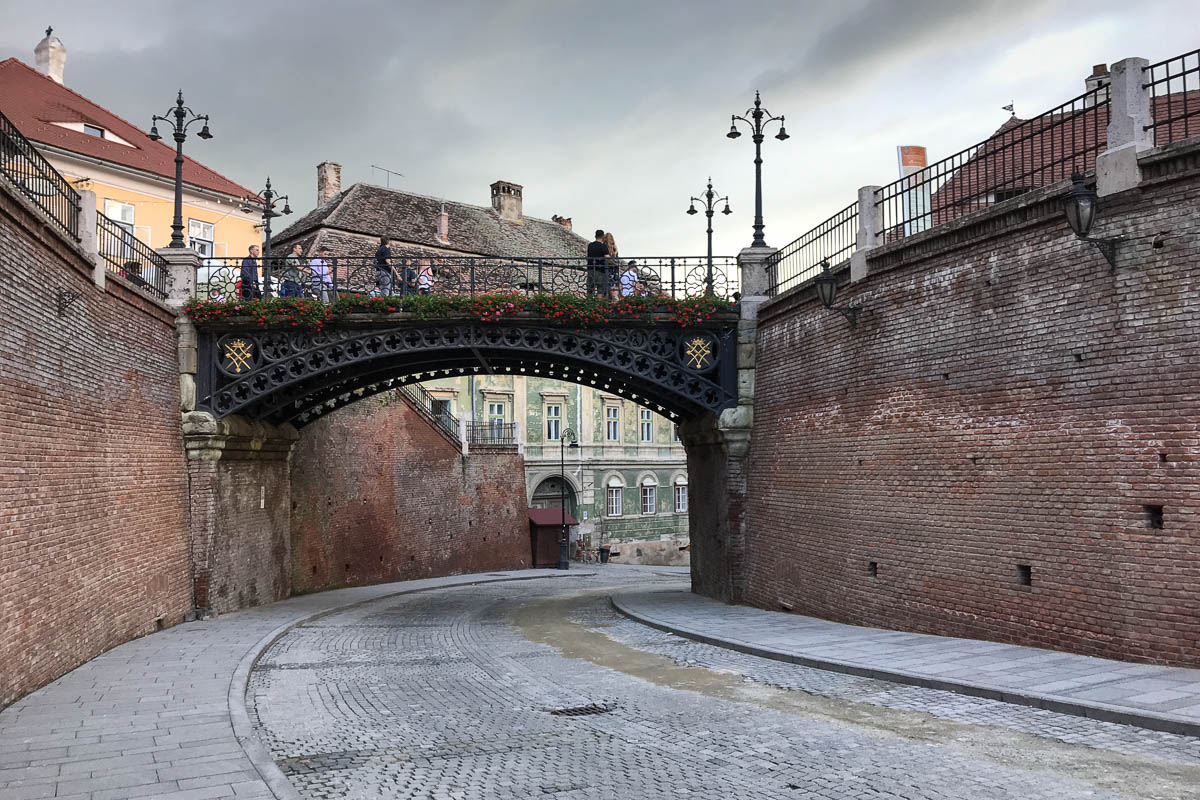
Three different legends, much older than the bridge itself, explain this picturesque bridge’s name. One legend says that if a person lies while standing on the bridge, the bridge will sway and creak. Another legend says that a merchant would be thrown off the bridge if he cheated a customer. The third legend has somewhat of a lasting effect today. That legend says that lovers walked on the bridge to declare their love and plan their marriage. If the girl lied about her virginity, she would be thrown off the bridge. Today one can see many of the popular locks of love on the bridge.
Sibiu Lower Town
The main way to get from upper town to lower is to walk under the Bridge of Lies or take the steps that run alongside it. A few blocks away, one can walk part of an ancient passage with steps between the two parts of town. Lower town is a bit grittier than upper town, with many buildings in need of repair. That said, one can find pleasant streets with beautifully restored old two-story houses with small parks and squares. We passed one of these small squares when walking to dinner one night. Frensis had recommended Max Restaurant , yummy Italian food in a charming old building, both inside and out.

Museums in Sibiu
Considering we were in Sibiu for only three days (Sunday-Wednesday), we went to three museums, a bit unusual for us. The two museums in town that we wanted to visit were both closed on Monday and Tuesday. We had already purchased train tickets for a morning train on Wednesday to Brasov, our next stop. Fortunately, when we went to the train station on Tuesday, we were able to change our tickets to an afternoon train. We’re not sure whether the small amount extra we had to pay was a change fee or a higher rate for the train at a different time of day.
Sibiu History Museum (Casa Altemberger)
Our favorite museum in old town was the Sibiu History Museum, in Casa Altemberger, an interesting building in and of itself. Admission was 20 lei ($5). The museum told the history of the area starting with the pre-Roman Dacian tribes, the Roman conquest, through the middle ages until the 19th century. This history was presented through a series of rooms, including several smaller rooms off the house’s courtyard. Excellent explanations in English of most exhibits including photos, documents, furniture, copper, silver, dishes, household items, weapons, coats of arms, and more. One room contained columns and tombstones from Roman times.
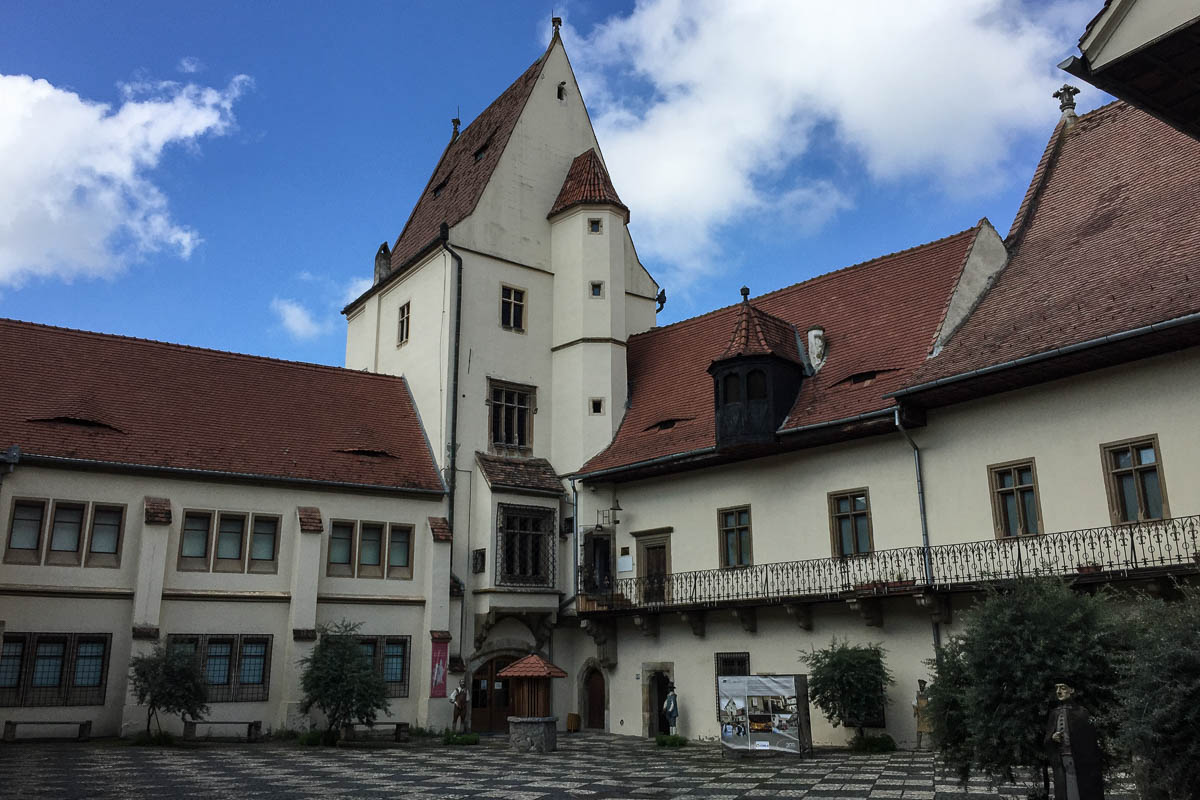
Probably our favorite part of the museum was the detailed explanations of the various guilds. Public ordinances described in great detail the requirements to join a guild, with strict rules and guidelines. These decrees included standards of craftmanship and punishment for work below standard. Hmm….maybe we could take a lesson for some of today’s industries.
Brukenthal National Museum
Located right on Piața Mare, the Brukenthal National Museum officially opened in 1817 in the palace of Samuel von Brukenthal, who was the Habsburg governor of Transylvania. This art museum consists of many different galleries containing European art and other items form the 15th to 18th century. The Romanian Art Gallery displays works from the early 18th century to the mid-20th century. Admission including all galleries is 45 lei ($11.36), with different prices for individual sections of the museum.
We wanted to visit only the Romanian art gallery because when and where do you get to see Romanian art. Not happening. To visit the Romanian gallery, admission 12 lei ($3), you also had to purchase a ticket for the European art gallery, 20 lei ($5). Not such a big deal, except for the snarky ticket clerk. She totally ignored us until she finished her conversation with the gift shop clerk, and then treated us rather rudely. Once inside the museum, we realized that to get to the Romanian gallery, you had to pass through the European gallery. Polite (in comparison) museum employees guided us through the various rooms.
ASTRA Museum of Traditional Folk Civilization

Part of the ASTRA National Museum Complex, the ASTRA Museum of Traditional Folk Civilization is Europe’s largest outdoor ethnographic museum. It is in the Dumbrava Forest about 4 km outside Sibiu’s city center. We took the Number 13 bus from the train station which generally runs about every half hour. Tickets cost 1.50 lei* and can be purchased from the vending machine next to the stop.
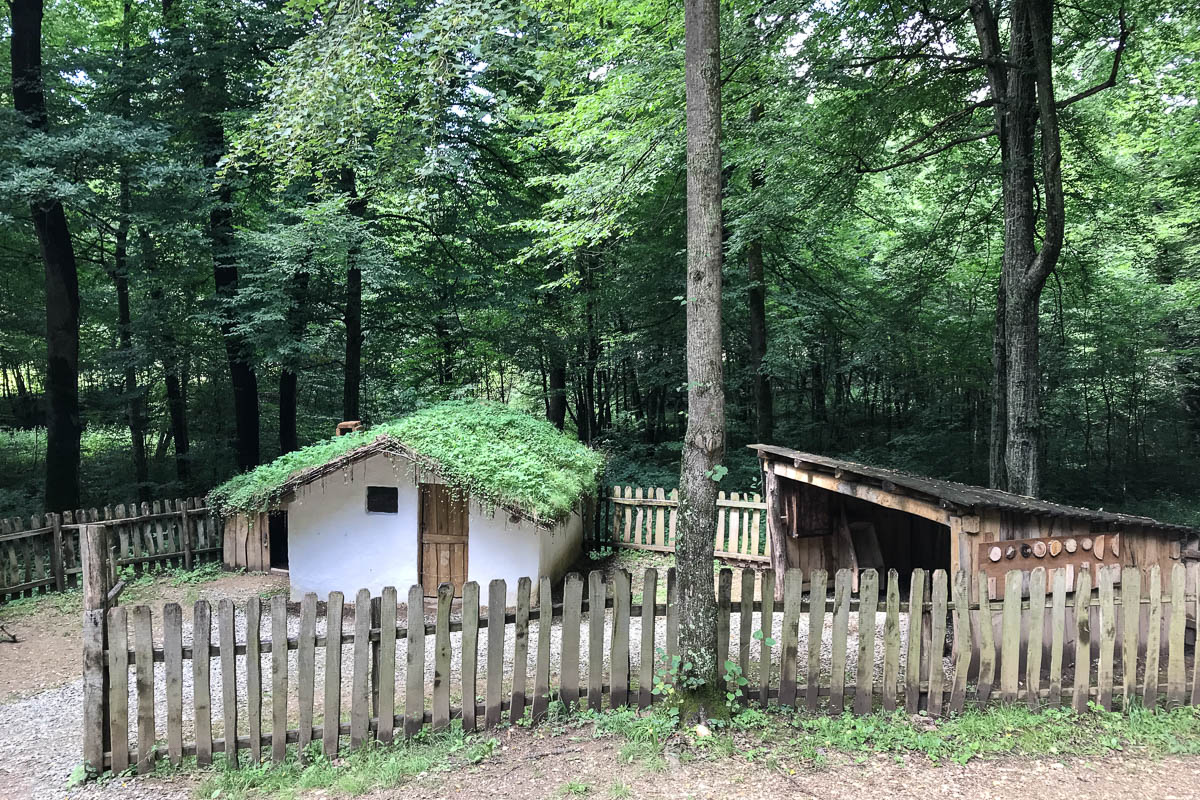
Larger than the Village Museum in Bucharest, the Museum of Traditional Folk Civilization presents a realistic picture of traditional Romanian village life. Sections of the museum are laid out by trade. Here you can see complete homesteads, including house, workshops, tools, etc. There are also churches and other public buildings, plus modes of transportation.
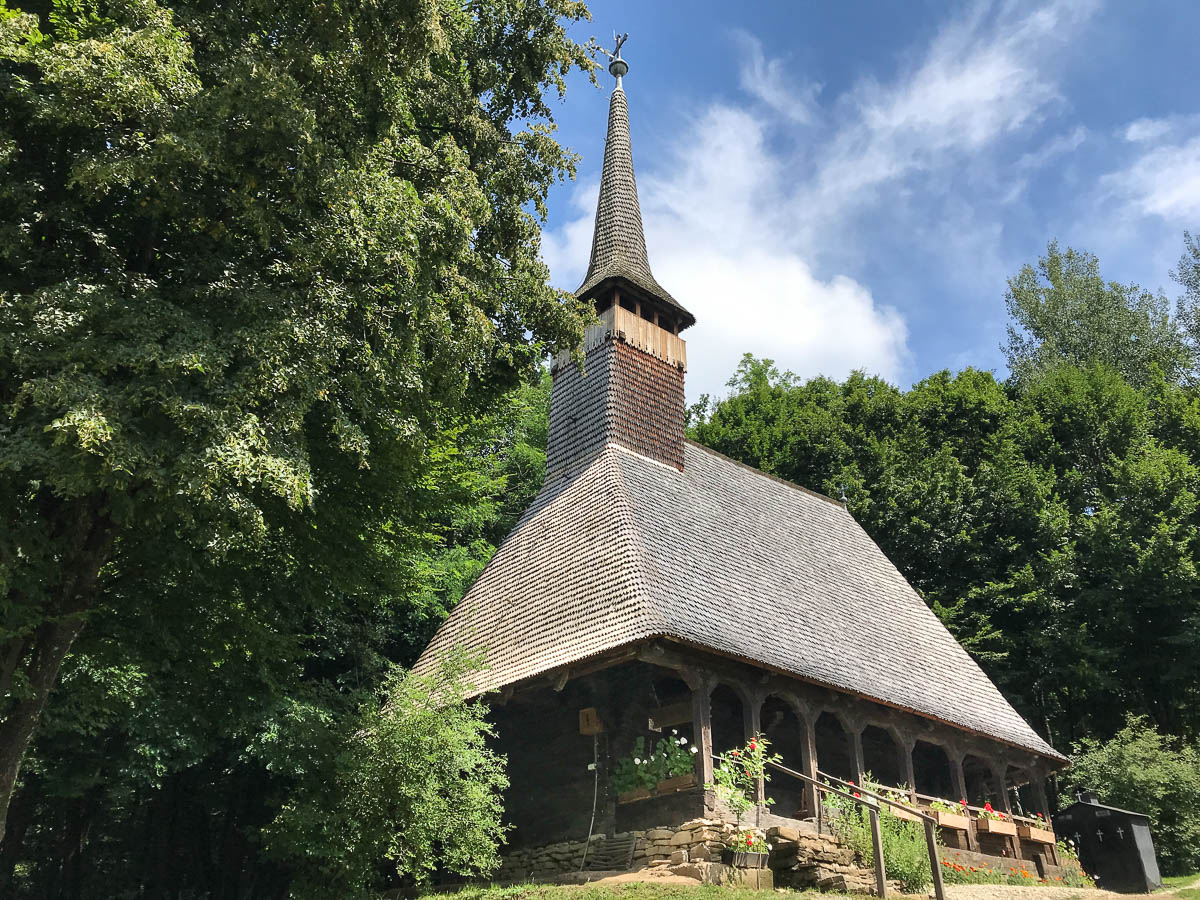
Many of the buildings include furnishings, and you can enter some of the buildings, or at least peak into others. The museum covers over 400 acres, with a lake in the center. We spent a relaxing couple of hours wandering through the forest and exploring the structures and barely made it through half of this unique museum.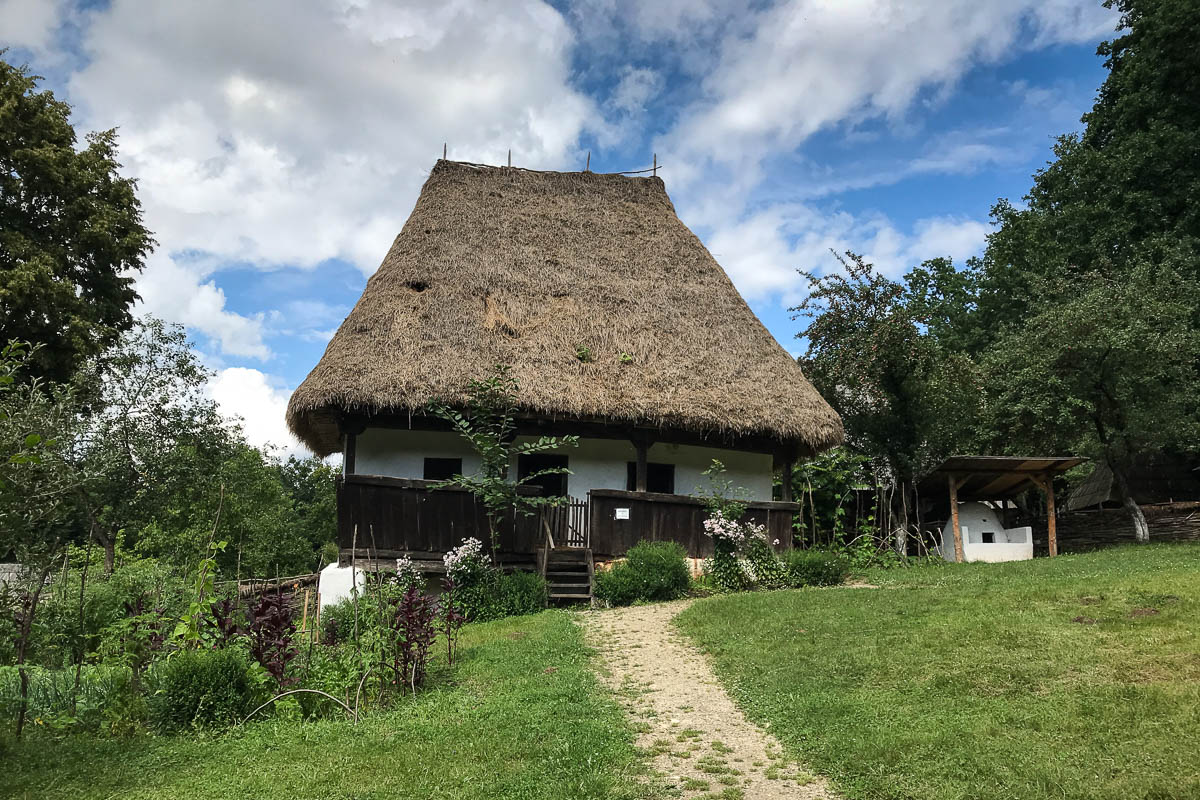

Sibiu Wrap-up

We thoroughly enjoyed our short visit to Sibiu, despite the rain. Our spacious Airbnb was in a local neighborhood about two blocks from the main square and pedestrian street. Although we didn’t have any bug excitement, like in Zagreb , our apartment was in an old building with some pretty funky wiring and plumbing. Although Sibiu is probably not on the list of possible part-time expat destinations, we could happily have stayed longer. We just might be back, at least for a slightly longer visit.
*At time of writing, 1 leu (singular of lei) = $ .25.
Next Up: Brasov, Romania, our home for a month
Ian & Ann

22 Comments
Great tour. Interesting writing with professional-quality photos.
Today was my shot-in-the-eye day to be followed by predicted 106 degree inland temps. It is now 1PM. My eye has mostly recuperated and the temperature feels like 81. I just enjoyed reading your blog. Life is good.
Hi Art,
Glad you’re feeling better. Ditto on those last three words in your comment.
Ian & Ann
Wow! Great pictures. Makes me want to go there.
Hi Robin,
As usual, Ian gets the credit for most, if not all, of the photos. We are really liking Romania. Who knows? Maybe you will visit someday.
Ian & Ann
I agree with Robin! 😉
I love all the great pictures!
Thanks Robin!
Ian & Ann
We love Rick Steve’s
Hi Michelle,
We love his guide books and videos. Have you seen Rick Steves’ Travel as a Political Act video?
https://www.youtube.com/watch?v=UU8oelnzdAQ
Ian & Ann
Once again…….awesome!
You two are amazing!👍
Hi Carrie,
Thanks again for your continuous support and encouragement.
Ian & Ann
Been to Romania and the pictures brought back some great memories. Kinda makes me want to go again!
Awesome pics.
Hi Marge,
Maybe you will go again. Are there any places in Romania that particularly stand out in your memories?
Ian & Ann
Fabulous report and photos. Inside of Trinity church is magnificent. You look so pretty with your friend Frensis. I like Ian standing next to the donkey. You sure are making the most of this beautiful location.
Thanks, Mom, Romania truly is beautiful!
Love,
Ann
Sibiu looks wonderful! Didn’t see much when we were in Romania – only Bucharest. Thanks for helping me remember the houses with eyes in their roofs. Your photos are really nice. Look forward to seeing your photos from other Romanian places.
Hi Karen,
Yes, the houses with the eyes are kind of special. We are currently in Brasov for a month and will have a post out soon.
Ian & Ann
Very very interesting. What a pleasant surprise to get such a positive review of Romania.
Thanks again Ann and Ian for such interesting and valuable perspectives on travels in Europe through the lesser known places.
Hi Den,
Yes, we are truly enjoying Romania and are pretty certain this won’t be a one-time visit. Since you mentioned perspectives, we think you might like Rick Steves’ video on Travel as a Political Act: https://www.youtube.com/watch?v=UU8oelnzdAQ
Ian & Ann
I’ve never been to Romania but now I’d like to go there. We hosted a couple from Sibiu in 2011 as part of Friendship Force. Our S.D. group went there but we didn’t unfortunately.
Hi Ellie,
We think Romania, at least the part we’ve seen (Transylvania) is beautiful, and think you would like it too. The people are also very nice.
Ian & Ann
Enjoying seeing the world through the both of you!
Hi Kathy,
Thanks. We feel blessed to be able to do this adventure and share it with you and others.
Ian & Ann